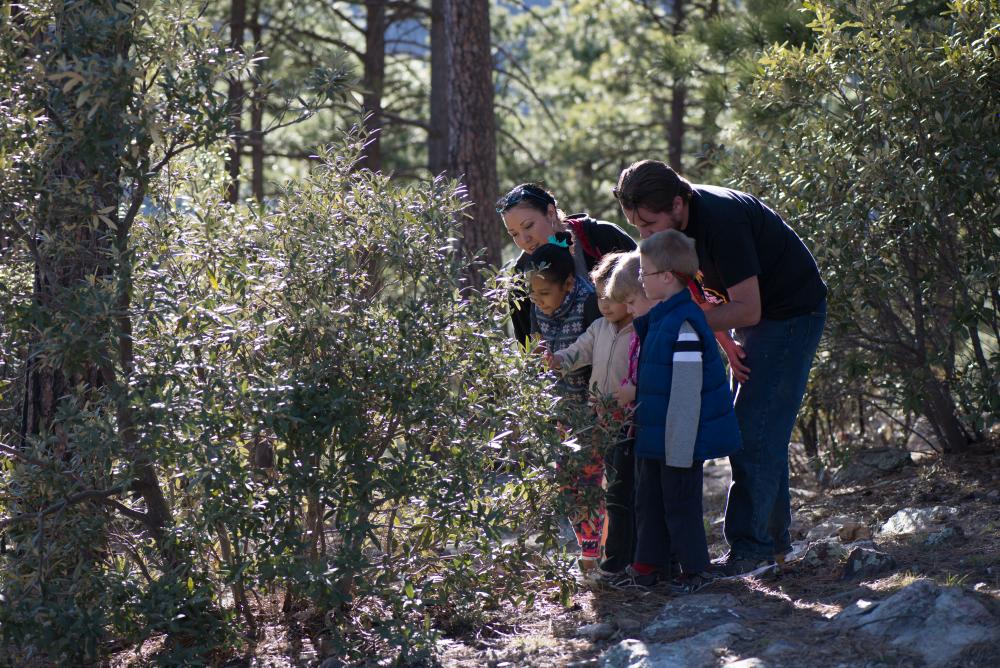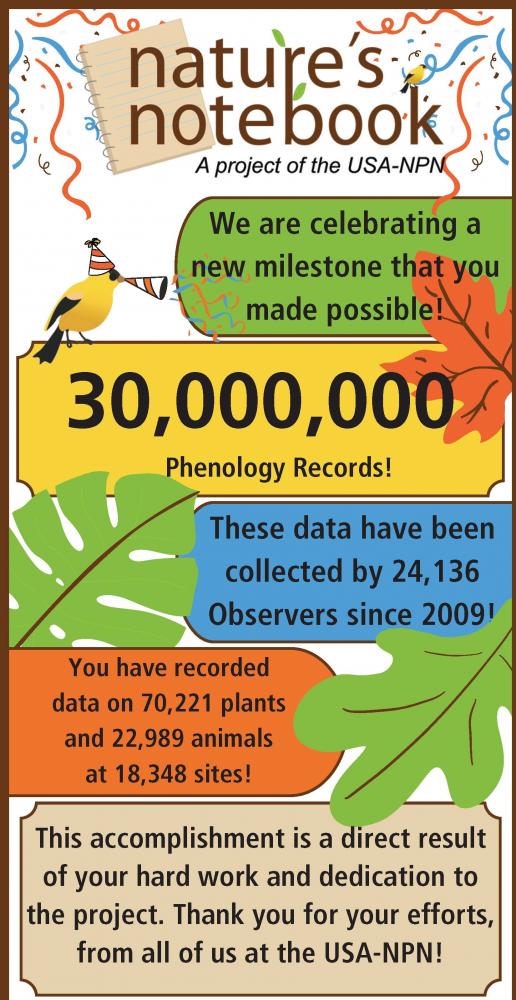
This week, we reached a significant new milestone - thirty million phenology records submitted to the National Phenology Database! The 30 millionth record was collected via Nature’s Notebook, the USA-NPN’s plant and animal phenology data collection platform, by Nika Gonzaga, a freshman in Desert View High School's Honors Biology Program in Tucson, Arizona. Nika observed young leaves on a desert willow tree. Nika said "as a freshman, this is my first time ever gathering research like this. It was enjoyable and a very simple task. I hope to do more research on other plants."
Nika's teacher, Cynthia Uber, said "My students enjoy taking a break from the classroom and going outside to the Phenology Trail we have on our High School Campus. They love using the Nature's Notebook app as it makes reporting their observations easier and quicker. We are using the data to see how climate change is affecting the species we have on our campus."
According to USA-NPN Director Theresa Crimmins, “reaching 30 million records speaks to the depth of USA-NPN’s engagement as well as the incredible commitment among tens of thousands of professional and volunteer observers and partners across the country.” Nature’s Notebook observers track local changes in plants and animals, motivated by their desire to contribute to a national effort, learn the intricacies of species they observe, and collect valuable data that are used by scientists and decision makers. Jan Schwartz is an observer with Pima County Master Naturalists who is tracking invasive buffelgrass. “I love the diverse flora and fauna of the Sonoran Desert, and we need to learn how to control invasive buffelgrass so that it doesn’t wipe out this diversity. My hope is that the data I collect at Tucson's Mission Garden will inform managers exactly when to remove buffelgrass.”
Over 500 groups have contributed phenology observations to Nature’s Notebook, including National Parks and Wildlife Refuges, Audubon chapters, Long-Term Ecological Research (LTER) sites, and botanical gardens and arboretums, nature centers, universities, and the National Ecological Observatory Network (NEON). These data have been crucial to understanding changes in the timing of seasonal events in plants and animals in response to changing climate conditions and other pressures. Jody Einerson, a Local Phenology Leader with the Oregon Season Tracker program said, “Oregon Season Tracker volunteers gather plant phenology and precipitation data at their home, rural property, or local schoolyard. The data are used by Oregon and national researchers to better understand weather, climate, and native plant interactions.”

The data in the National Phenology Database are used in diverse applications including natural resource management, threatened and endangered species management, forestry and agriculture, human health, and tourism. A recent paper in BioScience authored by USA-NPN staff and colleagues demonstrates the breadth of research and decisions that are made possible by these data. According to partner Scott Richardson with the US Fish and Wildlife Service, “the NPN provides us with cutting edge information to inform the work we do to conserve and recover species. By partnering with NPN, we have access to greater quantities of information covering a broader geographic scope that would be possible on our own.”
“This milestone gives us a chance to reflect on the current strengths of the dataset and also what changes we might consider going forward,” Theresa said. “For example, how can the USA-NPN best support pressing science and climate change questions and societal needs? We are excited about emerging opportunities for the phenology data the USA-NPN curates, such as predicting the timing and severity of allergy season and providing guidance on plant selection for those working on pollinator restoration. There is so much potential for phenology to make a difference in these and other areas.”
